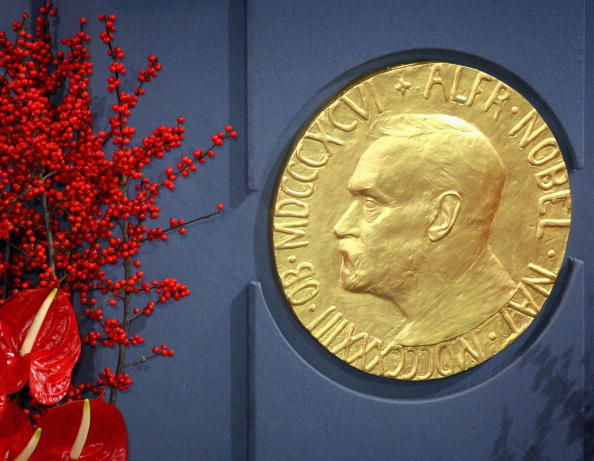
This year, the Nobel committee has sought to recognize the enormous potential and meteoric rise in success of immunotherapy as a strategy for treating cancer. By stimulating the inherent ability of our immune system to attack tumor cells this year’s Nobel Laureates have established an entirely new principle for cancer therapy. Specifically, the two recipients of this year’s Nobel Prize in Physiology or Medicine—James Allison, Ph.D., a professor at the University of Texas MD Anderson Cancer Center and Tasuku Honjo, M.D., Ph.D., a professor at Kyoto University—won for their discovery of cancer therapy by inhibition of negative immune regulation.
Allison studied a known protein that functions as a brake on the immune system. He realized the potential of releasing the brake and thereby unleashing our immune cells to attack tumors. He then developed this concept into a brand-new approach for treating patients.
Concomitantly, Honjo discovered a protein on immune cells and, after careful exploration of its function, eventually revealed that it also operates as a brake, but with a different mechanism of action. Therapies based on his discovery proved to be strikingly effective in the fight against cancer.
Allison and Honjo showed how different strategies for inhibiting the brakes on the immune system could be used in the treatment of cancer. These seminal discoveries by the two Laureates constitute a landmark in our fight against cancer.
A fundamental property of our immune system is the ability to discriminate “self” from “non-self” so that invading bacteria, viruses, and other dangers can be attacked and eliminated. T cells are key players in this defense and were shown to have receptors that bind to structures recognized as non-self and such interactions trigger the immune system to engage in defense. But additional proteins acting as T-cell accelerators are also required to trigger a full-blown immune response. Many scientists contributed to this important basic research and identified other proteins that function as brakes on the T cells, inhibiting immune activation. This intricate balance between accelerators and brakes is essential for tight control. It ensures that the immune system is sufficiently engaged in an attack against foreign microorganisms while avoiding the excessive activation that can lead to the autoimmune destruction of healthy cells and tissues.
During the 1990s, in his laboratory at the University of California, Berkeley, Allison was studying the T-cell protein CTLA-4. He was one of several scientists who had seen that CTLA-4 functions as a brake on T cells. Other research teams exploited the mechanism as a target in the treatment of autoimmune disease. Allison, however, had an entirely different idea. Since he had already developed an antibody that could bind to CTLA-4 and block its function, he set out to investigate if CTLA-4 blockade could disengage the T-cell brake and unleash the immune system to attack cancer cells.
Allison and his colleagues performed an experiment at the end of 1994, and in their excitement, it was immediately repeated over the Christmas break. The results were spectacular. Mice with cancer had been cured by treatment with the antibodies that inhibit the brake and unlock antitumor T-cell activity. Despite little interest from the pharmaceutical industry at the time, Allison continued his intense efforts to develop the strategy into a therapy for humans. Promising results soon emerged from several groups, and in 2010 an important clinical study showed striking effects in patients with advanced melanoma. In several patients, signs of remaining cancer disappeared. Such remarkable results had never been seen before in this patient group.
In 1992, Honjo discovered PD-1, another protein expressed on the surface of T-cells. Hojo was determined to unravel its role, so he meticulously explored its function in a series of elegant experiments performed over many years in his laboratory at Kyoto University. The results showed that PD-1, similar to CTLA-4, functioned as a T-cell brake, but operates by a different mechanism. In animal experiments, the PD-1 blockade was also shown to be a promising strategy in the fight against cancer, as demonstrated by Honjo and other groups.
This data paved the way for utilizing PD-1 as a target in the treatment of patients.Clinical development ensued, and in 2012 a key study demonstrated clear efficacy in the treatment of patients with different types of cancer. Results were dramatic, leading to long-term remission and a possible cure in several patients with metastatic cancer, a condition that had previously been considered essentially untreatable.
After the initial studies showing the effects of CTLA-4 and PD-1 blockade, the clinical development has been dramatic. Treatment, often referred to as immune checkpoint therapy has fundamentally changed the outcome for certain groups of patients with advanced cancer. Similar to other cancer therapies, adverse side effects are seen, which can be serious and even life-threatening. They are caused by an overactive immune response leading to autoimmune reactions but are usually manageable. Intense continuing research is focused on elucidating mechanisms of action, with the aim of improving therapies and reducing side effects.
Of the two treatment strategies, checkpoint therapy against PD-1 has proven more effective and positive results are being observed in several types of cancer, including lung cancer, renal cancer, lymphoma, and melanoma. New clinical studies indicate that combination therapy, targeting both CTLA-4 and PD-1, can be even more effective, as demonstrated in patients with melanoma. Thus, Drs. Allison and Honjo have inspired efforts to combine different strategies to release the brakes on the immune system with the aim of eliminating tumor cells even more efficiently. Many checkpoint therapy trials are currently underway against most types of cancer, and new checkpoint proteins are being tested as targets.
For more than 100 years scientists attempted to engage the immune system in the fight against cancer. Until the seminal discoveries by the two laureates, progress into clinical development was modest. Checkpoint therapy has now revolutionized cancer treatment and has fundamentally changed the way we view how cancer can be managed.













